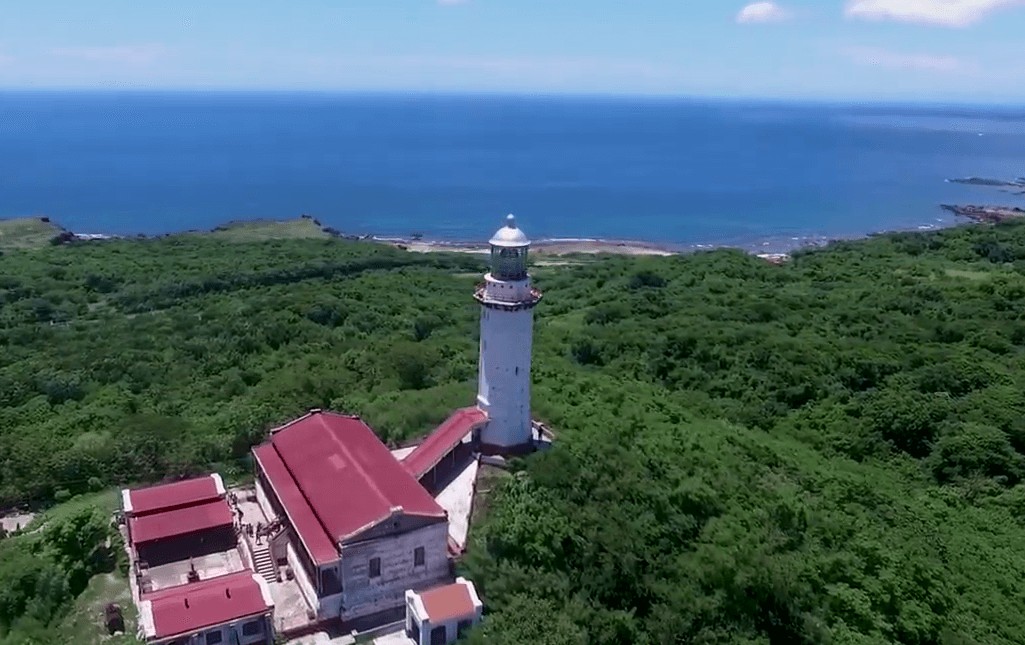
Cape Bojeador Lighthouse
Background
Cape Bojeador Lighthouse is the highest elevated active Spanish-era lighthouse in the Philippines and is located in the municipality of Burgos in the province of Ilocos Norte. It is a unique example of the 19th century lighthouse and architecture. It is made of local red bricks and accented with cast iron grillwork. Cape Bojeador Lighthouse has a height of 20 meters and is built on top of the Vigia de Nagpartian Hill. It offers tourists a scenic view of the Ilocos Norte coastline.
The whole complex of Cape Bojeador Lighthouse is arranged in three different levels. The lowest level contains the courtyard and a service building, the second level which is approximately three meters above the courtyard contains the main pavilion. Meanwhile, the tower which constitutes the highest level is situated at the rear, five meters higher than the pavilion below. Built of locally made bricks, the octagonal shaped tower has an inner dimension of two meters and an exterior dimension of three and half meters. The lower one fourth of the tower is truncated while the remaining body of the shaft is straight. In addition, the top of the tower supports an overhanging balcony which is surrounded and supported by decorative metal brackets. The attic where the cupola and lanterns rest is cylindrical.

According to its history, Cape Bojeador Lighthouse was originally designed by acclaimed engineer Magin Pers y Pers in the year 1887 during the Spanish colonial period in the Philippines. It was reconfigured, arranged and finished by the head of the lighthouse service engineer Guillermo Brockman in 1890 and it was first lit on March 30, 1892. The station has a physical plan that is typical of lighthouses in the Philippines, it includes a tower, pavilion, service building and enclosed courtyard. Meanwhile, the buildings were made of bricks which is the principal building material in the Ilocos region. The making of the bricks was facilitated by the construction of a kiln located at the bottom of the hill. The tower which rests on the highest portion of the hill is 16.3 meters high.
As the years passed by the lighthouse served as a guiding beacon for ships from the year 1892 up to the present time. On the other hand, the lighthouse has gone through various refurbishments as well as considerable challenges like the major Luzon earthquake in the year 1990 that destroyed the lenses and other apparatuses. Nonetheless, Cape Bojeador Lighthouse was declared a national historical landmark by the national historical survey on August 13, 2004 and ten months later it was proclaimed as a national cultural resource by the National Museum on June 20, 2005. As of today, Cape Bojeador Lighthouse is one of the most frequently visited lighthouses in the Philippines.
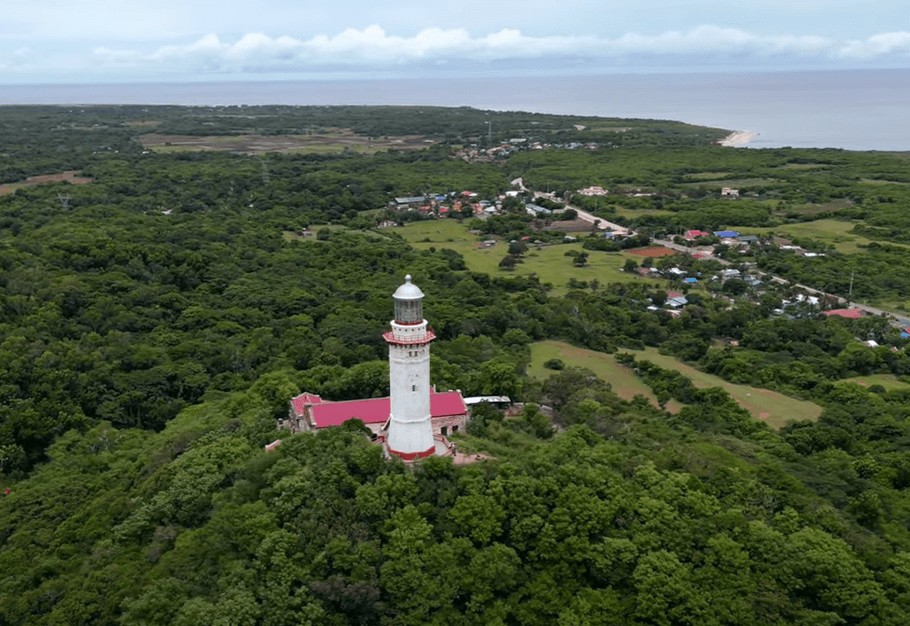
Name: Cape Bojeador Lighthouse
Location: Burgos, Ilocos Norte, Philippines
Features: 19th century lighthouse and splendid view of Ilocos Norte seacoast
My trip to Cape Bojeador Lighthouse
It was Sunday around 1:20 pm when our group arrived at the Cape Bojeador Pasalubong Center. As I explore the place I found out that the vendors here are accommodating and very welcoming. After a few minutes, we rode a tricycle going to the lighthouse. As soon as we reached the base of the lighthouse, I was so surprised because the tricycle ride didn’t last so long. Then I told myself that the meager amount we paid for the tricycle driver is good enough to boost their source of income every day.
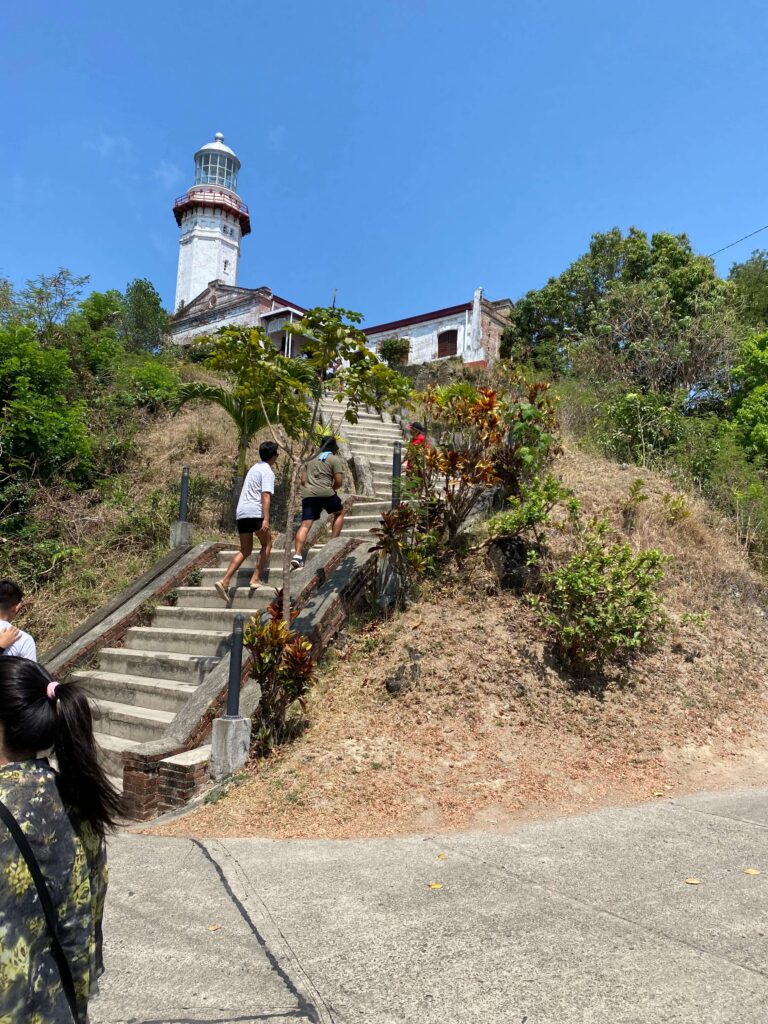
Afterward we climb a well established stairs on a very steep hill. After a few steps I have an overlooking view of the rocky coastline of Ilocos Norte as well as the low-lying flatlands up to the long cliffs. Then I noticed that the wind here is strong and its the perfect place to build a lighthouse as I can visualize how risky the ship’s journey is while passing this region.
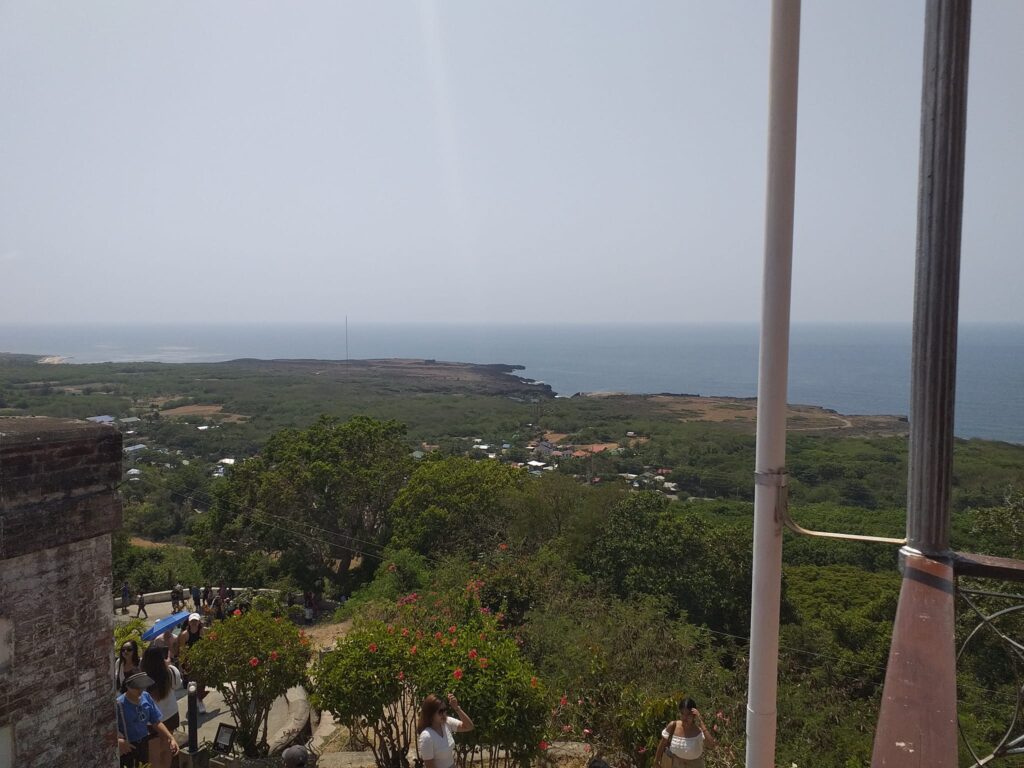
Anyway we enter the museum and I found out that the vintage room of the lighthouse keeper has been preserved in good condition. Also, there’s an informative panels that explain the history of the lighthouse as well as the apparatus and the equipment displayed. It was helpful enough to learn that the lighthouse was first lit hundred years ago and still retain its original cupola and lantern. In addition, the pavilion is in relatively good condition through proper restoration of some of its architectural detailing such as capiz and louvered window-panes. However, decorative iron grilles, plastering and gutters need immediate attention.

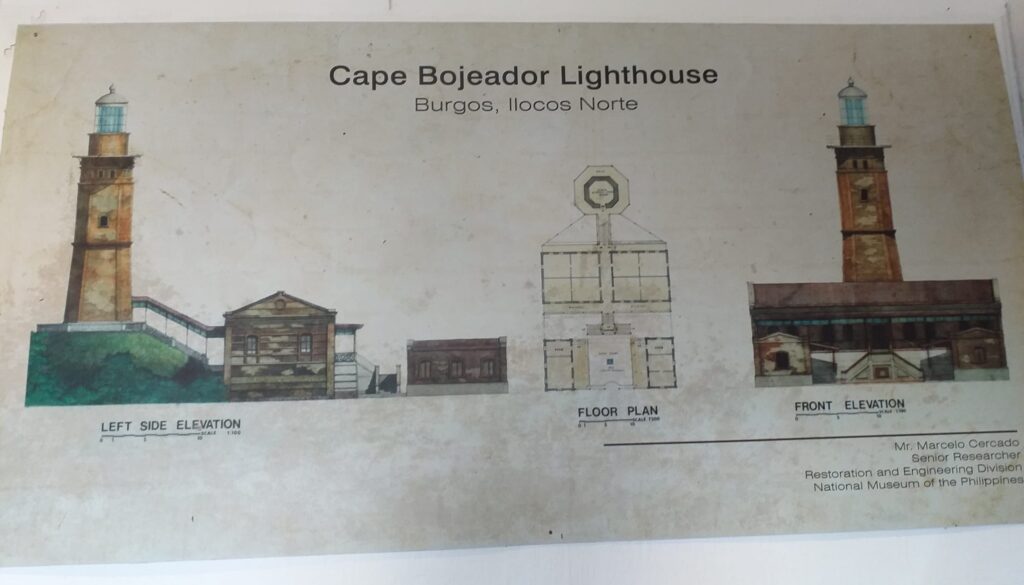
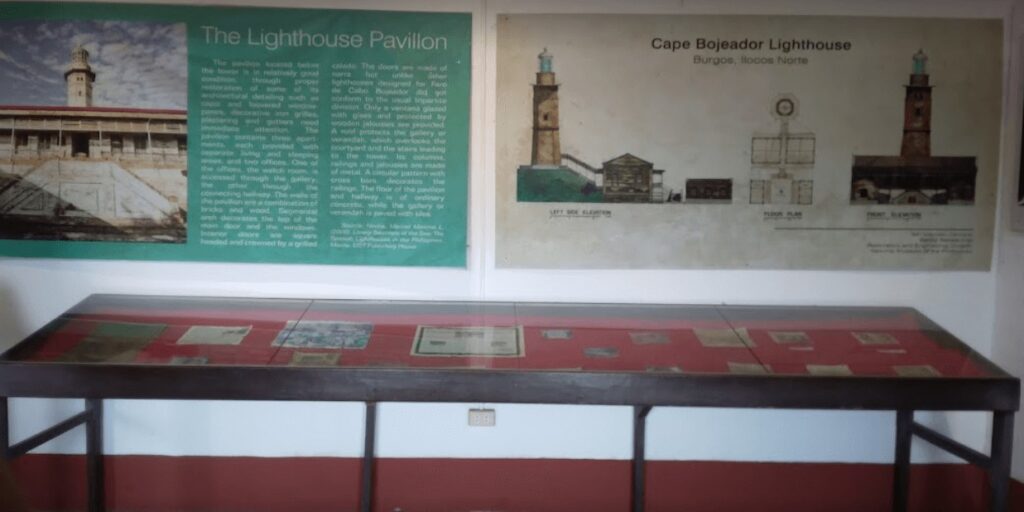
The pavilion contains three apartments, each provided with separate living and sleeping areas and two offices. One of the offices, the watch room, is accessed through the gallery and the other through the connecting hallway. The walls of the pavilion are a combination of bricks and wood. A segmental arch decorates the top of the main door and the windows. Interior doors are square headed and crowned by a grilled calado. Without a doubt, I feel like travelling back in time. For this reason I take several photos of the informative panels and I appreciate the place even though there were a lot of tourists that time.
Then as we continued walking and looking around at the Cape Bojeador Lighthouse, I noticed that the entrance to the main tower is closed to the public for safety reasons as it has been strike by lightning several times. We feel a little bit disappointed and we just have to make the most out of what we had. So we have our group picture taken at the stair leading to the main tower.
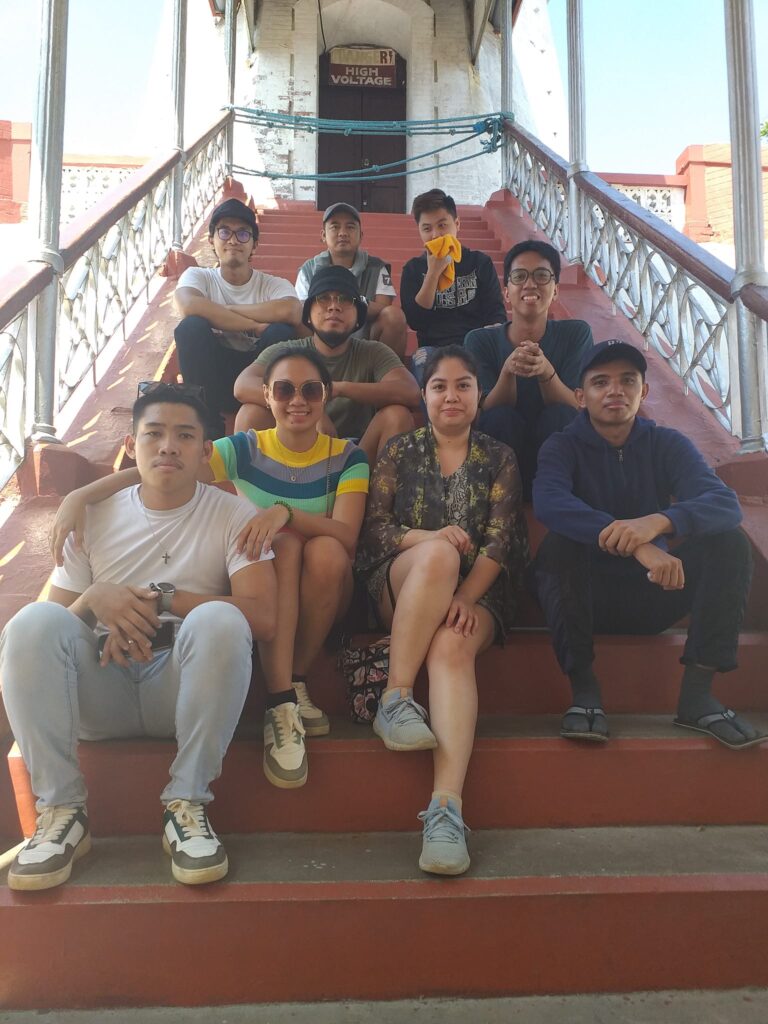
After a few minutes, it came to my mind that I did research before we visited this place and I find out that there were horror stories in this famous old Cape Bojeador Lighthouse. One of them is a former tourist aide and according to him there were tourists who were able to capture figures in their pictures that are said to be ghosts. In addition, there are some visitors who heard whispers, shouts and banging. Also there are cameras that suddenly stop working while they are taking photos. On the other hand, Jun the former caretaker of the lighthouse said that he saw a young woman in white and a priest because a few died here because of forced labor while building the structure. Anyway, as of our visit, we didn’t feel anything creepy or strange in the middle of the day.
After exploring the Cape Bojeador Lighthouse, we decided to walk 300 meters downhill as an exercise because our group didn’t want to spend the extra money on riding a tricycle to go back to the Pasalubong Center. As soon as we reach the Pasalubong Center, we buy delicious refreshments like lemonade and fresh fruit shakes to conquer our thirst because it was too hot that day.
How to Go to Cape Bojeador Lighthouse
By commute
- From the Partas bus terminal near Governor Pack Road and SM City Baguio, ride a Partas bus bound for Laoag, Ilocos Norte, and tell the bus conductor to alight you at the junction going to Cape Bojeador Lighthouse.
By private car
- From Laoag City, take the Pan-Philippine Highway and later turn left and drive uphill going to the Cape Bojeador Lighthouse Road, and from there the parking space is within reach. Note: the parking space is located at the souvenir center and is just a few hundred meters away from the lighthouse.
- Afterward, walk uphill for several minutes until you reach the lighthouse. Note: you have the option to ride a tricycle from the souvenir center going to the lighthouse. The tricycle fare is ten pesos per head.
Reminders and Tips:
- The entrance fee at Cape Bojeador Lighthouse is 20 pesos per head to help maintain its status as a heritage gem.
- Do not touch any exhibits inside the museum. Also bringing food, drinks, and pets is not allowed.
- There are souvenir shop below the lighthouse where you can buy some t-shirts and memorabilia for an affordable amount.
- After exploring the lighthouse, I suggest you go to other beautiful destinations in Ilocos Norte such as Kapurpurawan Rock Formation and Bangui Windmills.
- Above all, observe silence at all times.
There you have it, tripper. The world becomes more interesting when you view it from a different perspective. On the whole, I hope that this blog made you want to drop by Ilocos Norte and see one of the most historic lighthouses in the Philippines. Stay safe and have a nice day.




